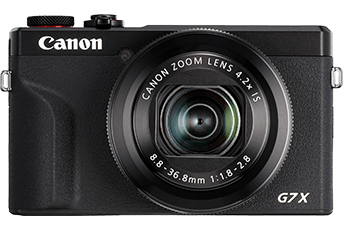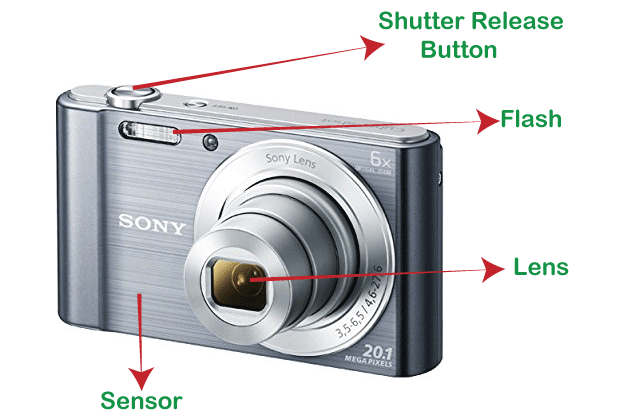What is a digital camera?
A digital camera is a device that captures and stores images in digital format, unlike traditional film cameras that use chemical processes to record pictures on light-sensitive film. Digital cameras use an image sensor, a small electronic chip that converts light into electrical signals, to capture images. Digital cameras come in many different types and styles, including point-and-shoot, mirrorless, and digital SLR cameras. They typically include a lens, an image sensor, a viewfinder or LCD screen for framing and previewing images, and controls for adjusting settings such as shutter speed, aperture, and ISO.

The images captured by a digital camera are stored on a memory card, which can be removed from the camera and inserted into a computer or other device for viewing, editing, and sharing. Digital cameras often come with software that allows users to edit and enhance their images. Many cameras also include built-in features such as image stabilization, autofocus, and in-camera editing.
Composition of digital camera
A digital camera is made up of several components that work together to capture and process digital images:
- Image sensor: The image sensor is the heart of a digital camera and is responsible for capturing the image. It is typically made up of millions of tiny light-sensitive pixels that detect light and convert it into an electrical signal.
- Lens: The lens is part of the camera that focuses light onto the image sensor. It comprises several glass or plastic elements that create a clear image.
- Shutter: The shutter is a mechanical device that controls how much time the light is allowed to enter the camera and reach the image sensor. It opens and closes to allow light to enter and exit the camera.
- Processor: The processor is responsible for handling the digital information from the image sensor and converting it into a digital image. It also handles other functions such as autofocus, exposure control, and image stabilization.
- LCD screen: The LCD screen is used to preview and review images and to access the camera's settings and menus.
- Memory card: Digital cameras use memory cards to store digital images. The memory card is typically removable and can be replaced with a larger card if needed.
- Battery: The battery provides power to the camera and allows it to function. The type and capacity of the battery will vary depending on the camera model and usage.

Digital camera picture quality:
The picture quality of a digital camera is determined by several factors, including the image sensor's resolution, the lens's quality, and the camera's processing capabilities.
- Resolution: The resolution of a digital camera is the number of pixels (picture elements) that the image sensor can capture. Higher-resolution sensors can capture more detail and produce images with more pixels, resulting in larger image files and greater flexibility when cropping or enlarging images. However, higher-resolution sensors can also make larger file sizes that may require more storage space and processing power.
- Lens quality: A digital camera's lens is also important for producing high-quality images. A high-quality lens can capture more light and produce sharper, more detailed images with less distortion or aberration. The lens's aperture, which controls the amount of light that enters the camera, can also affect image quality, particularly in low-light conditions.
- Processing capabilities: The processing capabilities of a digital camera can also affect the quality of its images. Advanced processing features such as noise reduction, color correction, and image stabilization can produce cleaner, sharper images with more accurate colors and less blur. However, these processing features can also increase file sizes and processing times.
Other factors that can affect the picture quality of a digital camera include the size and type of the image sensor, the camera's ISO sensitivity, and the quality of the camera's software and firmware. In general, high-end digital cameras with larger sensors, high-quality lenses, and advanced processing capabilities will produce better image quality than entry-level models with smaller sensors and basic features.
History of digital camera
- The history of the digital camera can be traced back to the 1960s, when engineers at various companies, including Eastman Kodak, Bell Labs, and Texas Instruments, began experimenting with digital image sensors and electronic imaging technology. Kodak engineer Steven Sasson developed the first true digital camera in 1975.
- The camera used a CCD image sensor to capture black-and-white images and stored the images on a cassette tape. The first commercial digital camera, the Dycam Model 1, was introduced in 1990 and used a 376x240 pixel CCD sensor to capture 24-bit color images.
- Over the next decade, digital cameras became increasingly popular and affordable, and their image quality improved significantly. In 1994, Apple introduced the QuickTake 100, the first digital camera designed for the consumer market. Other major players in the digital camera market include Canon, Nikon, Sony, and Olympus.
- In the early 2000s, digital SLR (DSLR) cameras began to gain popularity, offering traditional film cameras' versatility and image quality and the convenience and flexibility of digital technology. The first DSLR camera, the Kodak DCS 100, was introduced in 1991; in the early 2000s, DSLRs became widely available and affordable.
- In recent years, the popularity of traditional cameras has declined as smartphones, and other mobile devices have become more capable of capturing high-quality images and videos. However, professional photographers and enthusiasts continue to use digital cameras for their superior image quality, versatility, and creative control.
Advantages of digital camera
There are several advantages of digital cameras over traditional film cameras:
- Instant preview: With a digital camera, you can instantly preview the photos you have taken on the LCD screen without waiting to develop the film. This lets you quickly review your photos and adjust your settings for the perfect shot.
- Storage: Digital cameras use memory cards to store photos, which can hold thousands of images depending on their capacity. This makes storing and organizing your pictures easy, and you can easily transfer them to your computer, phone, or another device for editing or sharing.
- Cost-effective: Once you have a digital camera, you do not need to purchase film or pay for processing, which can be costly. Additionally, you can take as many photos as you like without worrying about the cost of an additional film.
- Quality: Digital cameras offer high-quality images with advanced features such as image stabilization, autofocus, and built-in editing tools to enhance photos. Higher-end digital cameras also provide higher-resolution sensors and advanced processing features for better image quality.
- Versatility: Digital cameras offer a wide range of settings and features, allowing you to customize your photos and achieve creative effects. They also provide the ability to shoot in different modes, such as manual or automatic, giving you more control over your images.
- Sharing: Digital cameras make it easy to share your photos with others, whether through social media, email, or other digital platforms. You can also print your photos at home or a photo lab or create photo books and other custom products with your images.